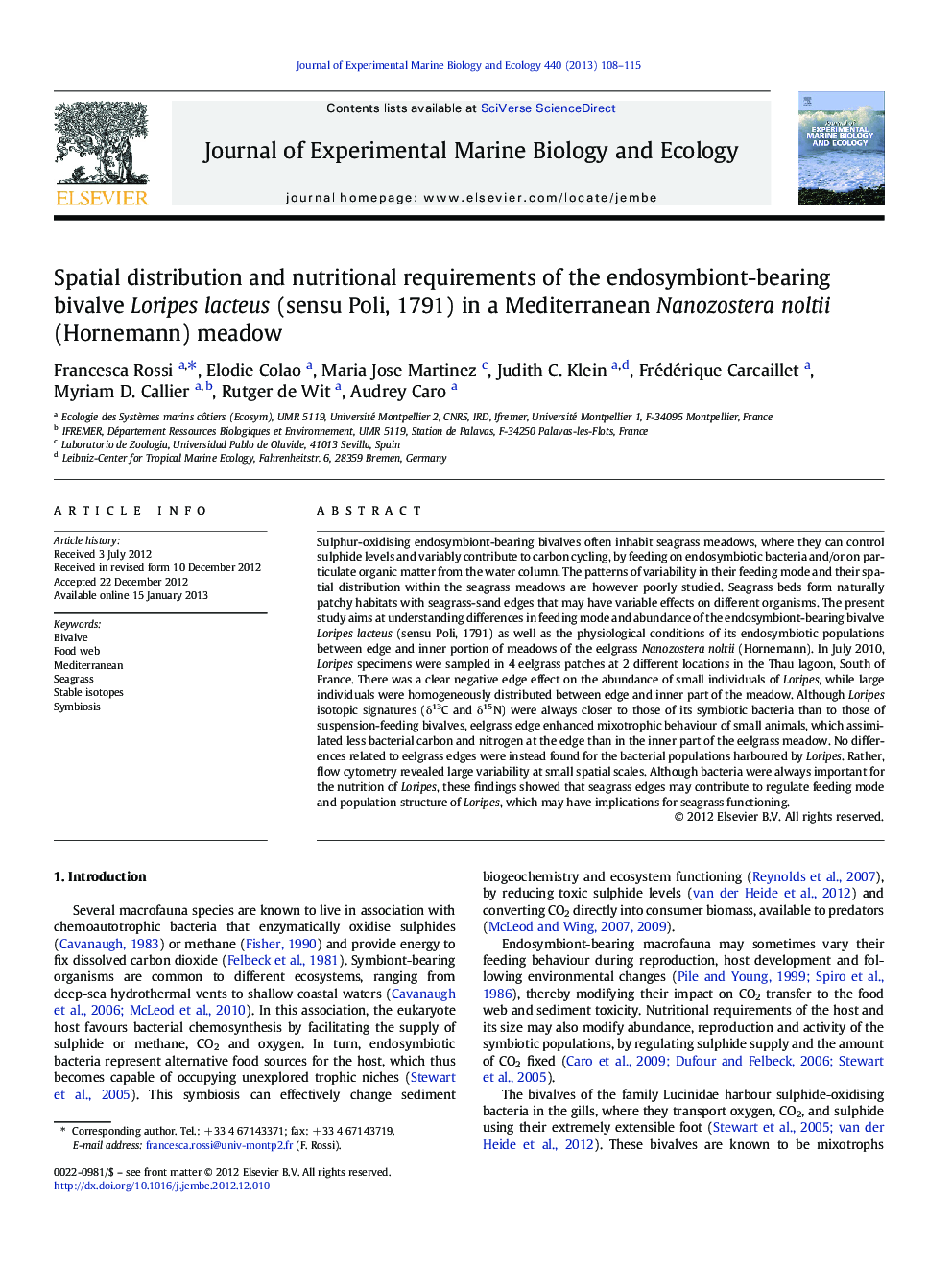| کد مقاله | کد نشریه | سال انتشار | مقاله انگلیسی | نسخه تمام متن |
|---|---|---|---|---|
| 4395807 | 1618435 | 2013 | 8 صفحه PDF | دانلود رایگان |

Sulphur-oxidising endosymbiont-bearing bivalves often inhabit seagrass meadows, where they can control sulphide levels and variably contribute to carbon cycling, by feeding on endosymbiotic bacteria and/or on particulate organic matter from the water column. The patterns of variability in their feeding mode and their spatial distribution within the seagrass meadows are however poorly studied. Seagrass beds form naturally patchy habitats with seagrass-sand edges that may have variable effects on different organisms. The present study aims at understanding differences in feeding mode and abundance of the endosymbiont-bearing bivalve Loripes lacteus (sensu Poli, 1791) as well as the physiological conditions of its endosymbiotic populations between edge and inner portion of meadows of the eelgrass Nanozostera noltii (Hornemann). In July 2010, Loripes specimens were sampled in 4 eelgrass patches at 2 different locations in the Thau lagoon, South of France. There was a clear negative edge effect on the abundance of small individuals of Loripes, while large individuals were homogeneously distributed between edge and inner part of the meadow. Although Loripes isotopic signatures (δ13C and δ15N) were always closer to those of its symbiotic bacteria than to those of suspension-feeding bivalves, eelgrass edge enhanced mixotrophic behaviour of small animals, which assimilated less bacterial carbon and nitrogen at the edge than in the inner part of the eelgrass meadow. No differences related to eelgrass edges were instead found for the bacterial populations harboured by Loripes. Rather, flow cytometry revealed large variability at small spatial scales. Although bacteria were always important for the nutrition of Loripes, these findings showed that seagrass edges may contribute to regulate feeding mode and population structure of Loripes, which may have implications for seagrass functioning.
► We studied distribution and diet of an endosymbiont-bearing bivalve in seagrasses.
► Endosymbiont bacteria are a primary source of carbon and nitrogen for the host.
► There was a clear seagrass edge effect on population structure and feeding mode.
► There were few small individuals at edges, which assimilated more heterotrophic food.
► Edge effects may modify the trophic pathway for seagrass functioning.
Journal: Journal of Experimental Marine Biology and Ecology - Volume 440, February 2013, Pages 108–115